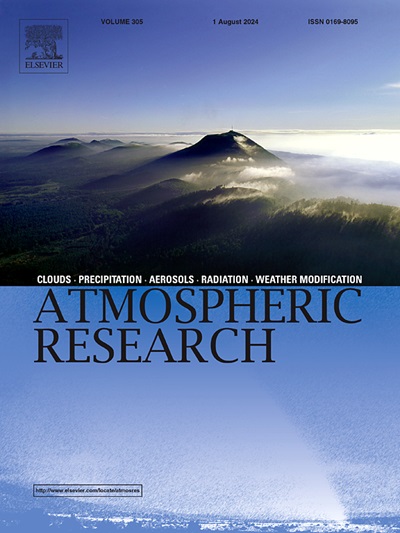Influence of local topographic structures on the atmospheric mechanisms related to the Andean-Amazon rainiest zone
IF 4.5
2区 地球科学
Q1 METEOROLOGY & ATMOSPHERIC SCIENCES
引用次数: 0
Abstract
The Andes-Amazon transition region features critically important ecological services on the local, regional and global scales. This region is among the rainiest zones in the world, with rainfall rates of up to 7000 mm/year. However, the physical mechanisms leading to the existence of these “precipitation hotspots” remain poorly known. Here, we attempt to disentangle the controlling atmospheric mechanisms exerted by local topographic structures that started to uplift about 5–10 million years ago in response to the Nazca Ridge subduction, in the vicinity of the Quincemil hotspot, the most intense of them. We first use the Weather Research and Forecasting model to conduct sensitivity tests to planetary boundary layer parameterizations at 5 km horizontal grid spacing during the austral summer of 2012–13. After finding the most suitable configuration in terms of the diurnal cycle of rainfall intensity and extent, we further perform topographic sensitivity tests by reducing the Fitzcarrald Arch lowlands and, on top of it, by removing the Camisea mountain. The Fitzcarrald Arch deflects moisture flux towards Quincemil, while the Camisea mountain induces local vortical circulations that increase moisture transport, convergence and rainfall over Quincemil, ultimately controlling its location and intensity by up to 40 %. When reducing the height of the Andes in half, we find that it sustains the development of precipitation hotspots, accounting for up to 60 % of rainfall, by providing a mechanical forcing to increase regional-scale moisture fluxes. Such mechanisms dominate during nighttime, when rainfall peaks in the region, and might explain the existence of the rainiest zone in the Andes-Amazon transition.
求助全文
约1分钟内获得全文
求助全文
来源期刊

Atmospheric Research
地学-气象与大气科学
CiteScore
9.40
自引率
10.90%
发文量
460
审稿时长
47 days
期刊介绍:
The journal publishes scientific papers (research papers, review articles, letters and notes) dealing with the part of the atmosphere where meteorological events occur. Attention is given to all processes extending from the earth surface to the tropopause, but special emphasis continues to be devoted to the physics of clouds, mesoscale meteorology and air pollution, i.e. atmospheric aerosols; microphysical processes; cloud dynamics and thermodynamics; numerical simulation, climatology, climate change and weather modification.
 求助内容:
求助内容: 应助结果提醒方式:
应助结果提醒方式:


